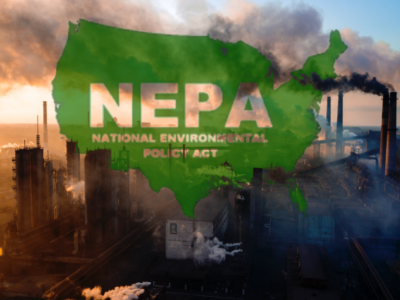NEPA in the Supreme Court (Part III)
Legal Planet: Environmental Law and Policy 2024-11-13

In prior posts, we’ve discussed the potential importance of the Seven Counties case, how the petitioners have made very aggressive arguments to shrink the scope of NEPA, arguments based on very narrow understandings of the kinds of causation that should be considered under NEPA, and how those arguments are inconsistent with the statute and would lead to absurd results.
In our final posts, we’ll talk about how causation should apply under NEPA, including the concept of proximate cause. Overall, the Supreme Court has articulated a functional approach that is based on the purposes of NEPA, based on the structure and text of the statute. Today’s post will lay the foundation by discussing NEPA’s purposes and how they differ from those of another area of law often used as an analogy, tort law. More detailed analysis can be found in our new working paper.
What might the policies of NEPA be that are relevant for a proximate cause analysis? In its 2001 decision in Public Citizen v. Dep’t of Transportation, the Court identified two policies: “ensur[ing] that the agency, in reaching its decision, will have available, and will carefully consider, detailed information concerning significant environmental impacts,” and “guarantee[ing] that the relevant information will be made available to the larger audience that may also play a role in both the decisionmaking process and the implementation of that decision.’’
The collection of that information under NEPA is important because NEPA establishes that agencies assess significant environmental impacts so that the agencies can consider the environment as a relevant decisionmaking factor, consistent with their other existing statutory authority. NEPA thus added the environment as a factor to be considered by all agencies, supplementary to any existing factors those agencies should consider. But NEPA also did not make the environment a factor superior to those other factors.
Thus, NEPA’s requirement for environmental analysis should not be extended where it fundamentally interferes with an agency’s ability to achieve its other goals – for instance, by imposing unrealistic or excessive analytic requirements on agencies that do little to achieve NEPA’s goals.
The Supreme Court has sometimes drawn an analogy between NEPA and a tort law doctrine called proximate cause, which limits a defendant’s liability for harms that involve extraordinary series of events. While petitioners regularly make comparisons to proximate cause in tort law, arguing for a narrow scope of causation in NEPA, that comparison is misplaced precisely because the policy concerns that drive proximate cause in tort law are very different from those that apply in NEPA. In addition, the petitioners badly misunderstand tort doctrine, but we won’t go into that here.
A key component of proximate cause in tort law is the concept of foreseeability. The Restatements of Torts are as close as you can find to a definitive statement of torts doctrines. Foreseeability is central to both the Second Restatement definition of proximate cause as whether a defendant’s actions are a “substantial factor” in bringing about the harm to the plaintiff and the Third Restatement replacement of proximate cause with a “scope of liability” test as to whether the harm the defendant caused “result[ed] from the risks that made the actor’s conduct tortious.” But in both cases, the standards relate closely to the concept of foreseeability; if subsequent effects or harms are foreseeable, a defendant is generally liable for them. And in both cases, the policy rationales are similar. Proximate cause addresses concerns about tort liability that is disproportionate to the defendant’s responsibility or blameworthiness, and concerns about the risk of chilling private activity through crushing and unpredictable liability.
But those policy rationales do not have much traction in the context of NEPA. NEPA implies no blameworthiness for an agency action with significant environmental impacts. It imposes no monetary penalty on agencies. And, as long as the environmental review is adequate, it authorizes no injunctive relief against an agency regardless of harm to the environment. Whether liability matches the wrongfulness of a defendant’s actions, or the harm that those actions caused, simply is not relevant.
The upshot is that there is no basis for the concept that a subsequent action or decision by another government agency or private actor necessarily breaks the chain of causation and limits an agency’s responsibility to analyze the relevant environmental impacts of its proposed action. Indeed, even in tort law, an intervening act by a third party that is foreseeable generally does not affect the liability of a defendant. And, as the above analysis makes clear, given NEPA’s policies, there is no reason to impose a stricter standard of proximate cause under NEPA than in tort.
In our final post, we will show how the policies of NEPA elaborated above, and the comparison with tort law, produce three basic principles for proximate cause in terms of the agency’s environmental review responsibilities, principles reflected both in the statute and in the leading Supreme Court cases.